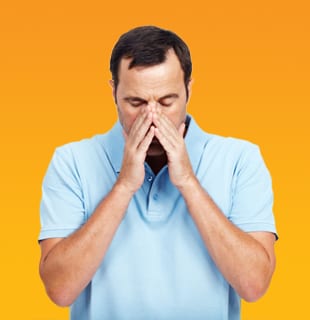Spring Allergies or Something More?
April 8, 2013

In the spring, high pollen counts may leave you feeling like you’re coming down with a cold. So how do you know if your symptoms are due to allergies or something more? Here’s a quick breakdown.
Spring allergy symptoms:
- Sniffling, sneezing and sometimes coughing
- Runny nose typically with thin, watery mucus
- Itchy, watery eyes and scratchy throat
- Symptoms that flare quickly
- Symptoms that come and go with high pollen counts or other allergens
Symptoms of a cold or other upper respiratory infection:
- Sniffling, sneezing and coughing
- Runny nose usually with thicker or colored mucus
- Aches and pains, fever, sore throat
- Symptoms that come on more gradually over a day or two
- Symptoms that usually retreat after a week
Here are a few tips to minimize spring allergy symptoms:
- Keep your eye on the pollen count; a website like Pollen.com can give you daily forecasts and even an idea of what’s ailing you with a list of predominant pollens in your area.
- Stay indoors as much as possible on dry, windy days, when pollen counts typically are higher.
- Also on high-pollen days, schedule workouts and errands before 10 a.m. or after 4 p.m., when pollen counts are lower, and keep windows closed and use recirculated air while driving.
- Wear sunglasses to help keep pollen out of your eyes.
- Use HEPA filters on your home and office air conditioners and furnaces.
- Take off your shoes at the door so you don’t track pollen inside, and wipe off your pets’ fur when they come in from the yard.
- Shower when you come in and put on a clean, pollen-free set of clothes.
- Do not hang clothes outside to dry.
- If possible, have someone else mow the lawn.
If necessary, try finding allergy relief with an over-the-counter antihistamine. Prescription medications are also available for severe sufferers. For colds and respiratory infections, get lots of rest and drink fluids to stay hydrated. If symptoms worsen after five days or last more than one to two weeks, check in with your doctor. Walk in now or schedule an appointment at CareSpot.
